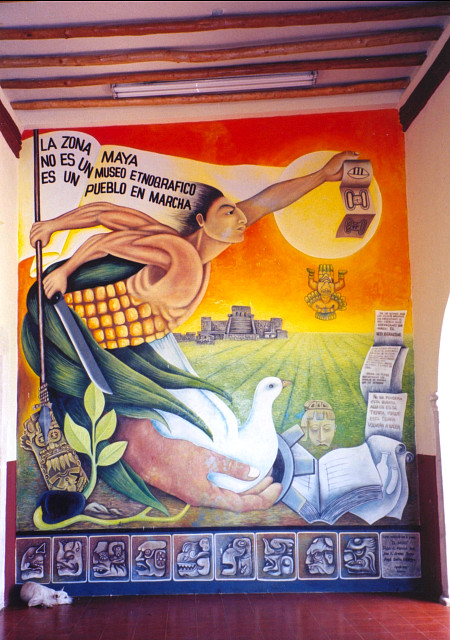

"Between 1847 and 1849, taking advantage of a civil war that divided the white elite, Mayan rebels launched a millenarian uprising that bore strong similarities to the massive rebellion in Upper Peru (today's Bolivia) in the late eighteenth century. Like that earlier revolt, the Mayan campaign displayed genocidal tendencies from the outset. It aimed explicitly at killing any whites, combatant or non-combatant, who came within range of rifle or dagger. By this means, the hated colonizer and his brood would be banished forever."The Mayan uprising had the predictable consequence of uniting the whites, and encouraging mestizos (mixed-bloods) to close ranks with them. The Yucatecan authorities responded with exterminatory race war of their own. Tens of thousands died on both sides. The end result was the exhaustion of the warring parties, and the establishment of a semi-independent Mayan kingdom in the eastern third of the pensinsula, roughly following the contours of the Mexican state of Quintana Roo, that survived into the twentieth century. In the small town of Tihosuco, astride the highway south to Chetumal on the Belize border, I was astonished to discover that numerous structures still lay in ruins from the Caste War. Others had been only partially rebuilt; the two categories combined might constitute half of the town's present-day architecture. Here is an urban landscape still ravaged, 150 years later, by genocidal warfare."













Photos are copyright 2005-06 by Adam Jones. They may be freely used for educational
and other non-commercial purposes, if the author is credited and informed.
High-resolution digital versions are available on request.

